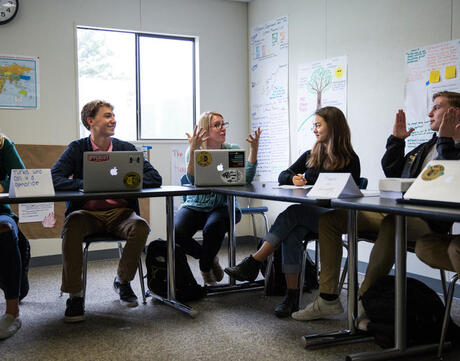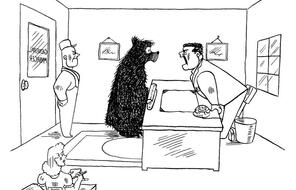
How Do Others Define Your Identity?
At a Glance
Language
English — USSubject
- Civics & Citizenship
Grade
6Duration
One 50-min class period- Democracy & Civic Engagement
Overview
About This Lesson
This lesson is part of the following unit Identity & Community: An Introduction to 6th Grade Social Studies
In the first two lessons, students engaged in activities in which they answered the question, “Who am I?” Yet, even as we struggle to define our unique identity, we are being defined by others. Sometimes groups attach labels to us that differ from those we would choose for ourselves. In the book The Bear That Wasn’t, Frank Tashlin uses words and pictures to describe that process. Tashlin tells the story of a bear who is told again and again that he is a “silly man who needs a shave and wears a fur coat.” So many people label him this way that eventually he begins to question his own identity as a bear. Ultimately, the bear recognizes that he is not a man but he is not convinced that he is a bear either. Tashlin’s story is a metaphor for how identity is formed not only by our perceptions of ourselves but also by how others define us.
In the following lessons, students will explore the relationship between the individual and society by looking at how their own identities are influenced by others. This is a theme relevant to the study of world history, especially ancient world history. Before the modern era, most cultures placed labels on individuals that were determined at birth—labels such as slave, prince, merchant, or farmer. Reminding students about how, even today, their own identities are shaped by larger society can help students relate to the histories of people whose culture may seem distant and unfamiliar.
Lesson Plans
Activities
Materials and Downloads
Quick Downloads
Download the Files
How Do Others Define Your Identity?
Unlimited Access to Learning. More Added Every Month.
Facing History & Ourselves is designed for educators who want to help students explore identity, think critically, grow emotionally, act ethically, and participate in civic life. It’s hard work, so we’ve developed some go-to professional learning opportunities to help you along the way.
Exploring ELA Text Selection with Julia Torres
On-Demand

Working for Justice, Equity and Civic Agency in Our Schools: A Conversation with Clint Smith
On-Demand

Centering Student Voices to Build Community and Agency
On-Demand















